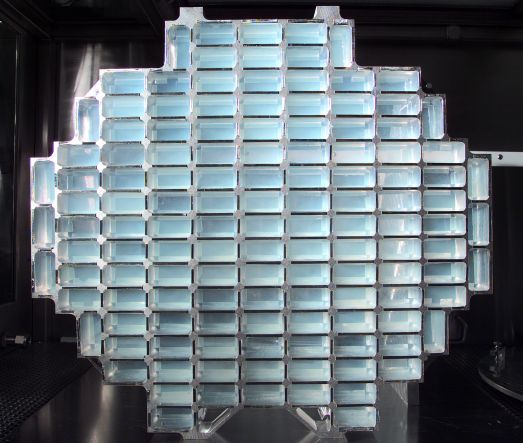
|
Explanation: On February 7th, this honey comb of aluminum cells filled with aerogel was launched on the STARDUST mission to interplanetary space. STARDUST's goal is to capture dust from a comet's tail and return to planet Earth - the first sample return mission to a comet! This structure represents about 1,000 square centimeters of area for collecting dust trailing within 150 kilometers of the nucleus of P/Wild-2. Comet P/Wild-2 is new to the inner Solar System. Having spent its life in orbit between Jupiter and Uranus, this comet was deflected in 1974 by a close encounter with Jupiter and now orbits between Jupiter and Earth. Dust from P/Wild-2 should impact the aerogel at high speeds and come to rest leaving carrot-shaped tracks in this amazingly tough, transparent, ultra-low density material. Returning to Earth by parachute in 2006, the cometary dust sample will be analyzed for clues to the formation and primordial composition of our Solar System.
|
January February March April May June July August September October November December |
| |||||||||||||||||||||||||||||||||||||||||
NASA Web Site Statements, Warnings, and Disclaimers
NASA Official: Jay Norris. Specific rights apply.
A service of: LHEA at NASA / GSFC
& Michigan Tech. U.
Based on Astronomy Picture
Of the Day
Publications with keywords: comet - dust - aerogel - Stardust project - Stardust
Publications with words: comet - dust - aerogel - Stardust project - Stardust
See also:
- APOD: 2025 November 25 B Comet Lemmon and the Milky Way
- 3I/ATLAS: A View from Planet Earth
- APOD: 2025 November 17 B Comet Lemmons Wandering Tail
- APOD: 2025 September 30 B Comet Lemmon Brightens
- APOD: 2025 September 29 B Two Camera Comets in One Sky
- APOD: 2025 September 26 B A SWAN an ATLAS and Mars
- APOD: 2025 September 18 B Comet C/2025 R2 SWAN
